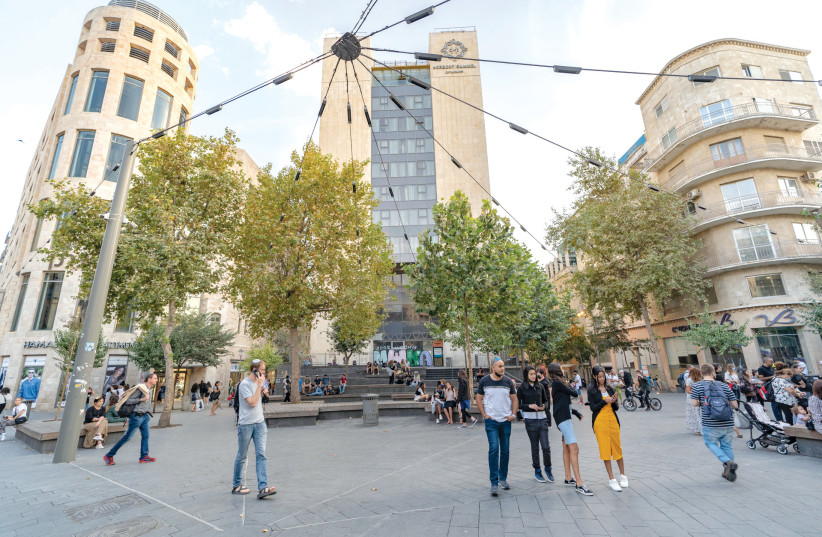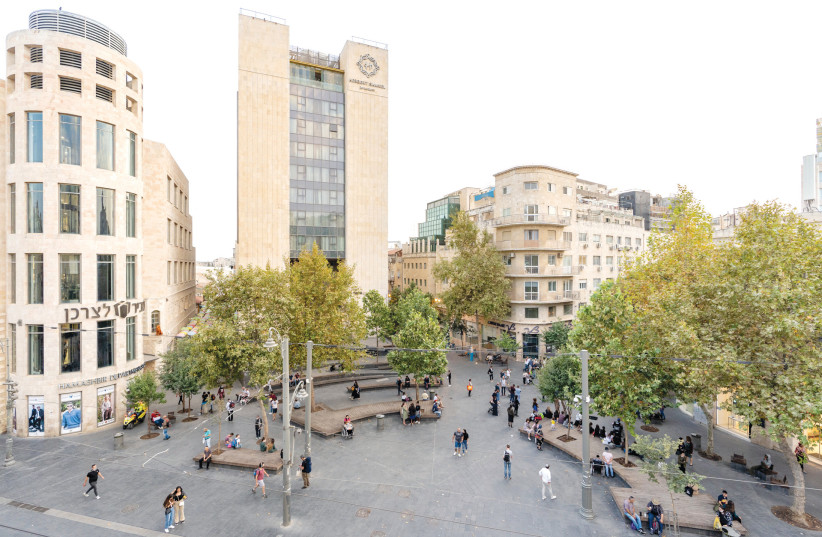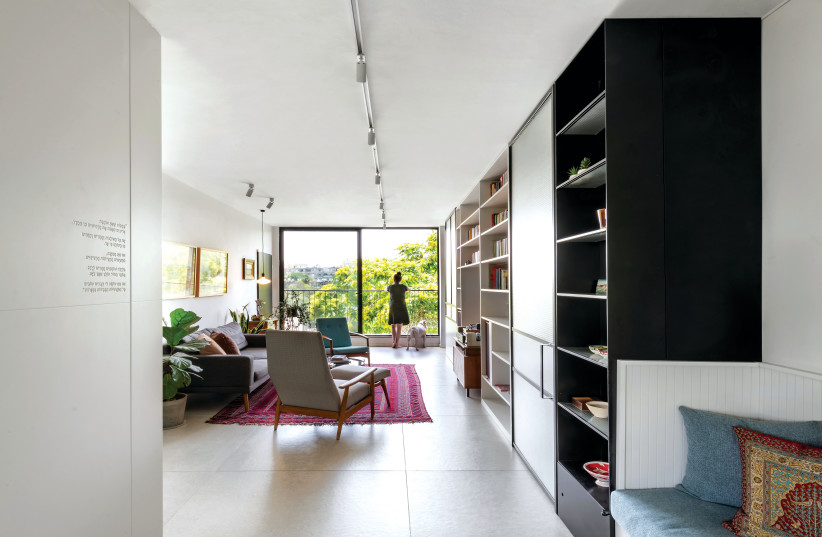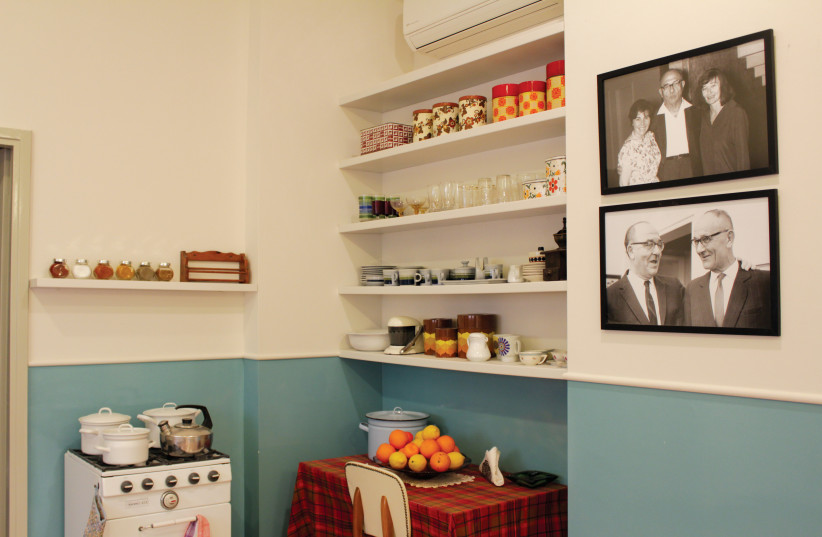Indeed, what could be a better fillip for us all, in the wake of the lockdowns, social distancing and – sadly – continued use of face masks than being welcomed into the homes of all kinds of Jerusalemites, and gaining rare entry into public and other edifices that are either normally inaccessible to us, or to which we simply don’t give the time of day during the course of our routine to-ing and fro-ing?
Given the above, the return of the annual Open House Festival (November 18-20) in the capital is all the more pleasing.
The 15th edition of the event, following last year’s pandemic constraint-induced hiatus, features hundreds of intriguing, beautiful and compelling sites, and guided tours that should provide us all with a better idea of where we live, the historical backdrop to how we got here, where the city might be headed, and how it may change in the not too distant future.
ONE SPOT that has changed for the better over the past couple of years or so is Zion Square. To take a leaf out of the Fab Four’s lyrics on “Getting Better,” from the landmark Sgt. Pepper’s Lonely Hearts Club Band album, it couldn’t get much worse. The place was in dire need of sprucing up.
Several decades ago, Zion Square was a major leisure and commercial hub of the evolving city. The urban fulcrum has gone through numerous makeovers since it was created, during the British Mandate, almost 90 years ago. Older Jerusalemites may even recall the fabled Zion Cinema, which opened for business in 1912, as the Ottoman Empire was crumbling, and screened innumerable pieces of celluloid for 60 years.
Today, as Tamir Manzur Carmel explains in the context of the Urban Forest Clearing tour he and fellow architects Maayan Tokkie-Carmel and Maya Atidia will lead on November 18 and November 19 (both 2:30 p.m.), the interface between Ben-Yehuda Street, Jaffa Road and Herbert Samuel Street is a far more inviting and user-friendly proposition than in relatively recent years gone by. In fact, the improved state of affairs has been a street-level fact for the past three years, following the trio’s success in a municipal planning contest.
“We will talk about the planning, and what and why we did what we did,” he says.
There is a marked environmental aspect to the design.
“We felt it was very important to add many trees to the square,” Carmel continues. “We all like the squares in Europe, in Paris and Barcelona and other places, but we are not Europe,” he notes, referencing the meteorological discrepancies. “For a square in Israel to be successful, particularly with global warming, you need shade. We felt the shade should be natural rather than man-made. It is more beautiful and healthier, and good for the planet.”
And it was not just a matter of planting and moving on, allowing Mother Nature to do her thing.
“If you look at the trees along the light rail route, that were put there 10 years ago, you can see they haven’t grown much,” Carmel notes. “We place each tree in a casing measuring 3 meters by 3 meters, with lots of aerated soil to make sure it doesn’t become clammy and coagulate. If you cover soil with concrete the soil becomes tightly packed and the tree roots can’t develop. We made sure there was plenty of soil, more than is normally provided.”
The thinking behind the arboreal addition was not only to attract people to the square but also to tempt them to hang out there. “That’s why we arranged seating in the shaded areas, with different kinds of seating facilities – for couples, and individuals – and on the different levels of the square.”
The architectural thinking was not purely aimed at ensuring the public is comfortably ensconced. Due to its central location Zion Square has a history of hosting demonstrations, including a protest organized by Herut Party leader MK Menachem Begin, in 1952, against the Holocaust reparations agreement with West Germany. That facility was uppermost in the minds of the architects when they submitted their entry to the contest.
“People can play music there, and they can be seen and heard from all directions. And you can hold demonstrations there. If someone stands in the center of the square, you can see them from Ben-Yehuda Street and also from Herbert Samuel Street.”
Longer-term Jerusalemites may remember the cinema that gave the square its name, but the intersection of several major urban arteries has served a wide array of purposes, including social, commercial and political.
Sadly, it was a cataclysmic event that sparked the revamp. The municipality planning competition for the square was initiated by the parents of 16-year-old Shira Banky, who was murdered during the city’s 2015 gay parade.
“The square hosted a public shiva [mourning] for Shira, and it became a symbol of tolerance and inclusion,” observes Carmel. “All sorts of discussion circles took place there, and the [planning] competition took that into account.”
THE JERUSALEM offering is part of the Open House Worldwide network of 50 organizations that host festivals and dialogue about architecture, design and cities around the world. The roster includes such major metropolises as London, Mexico City, New York, Rome and Melbourne, but also some smaller-scale cities such as Limerick, Macau, Gdynia and Bilbao. Our own Jerusalem has been in on the global Open House act since 2007.
Ilanit Melchior, who oversees the event here in her capacity as tourism director at the Jerusalem Development Authority, notes that this year’s event is particularly important. She says she hopes Open House helps to inject some much-needed impetus to the local tourism industry.
“We are delighted to open the Open House project, a fascinating urban festival which is a global brand, as part of opening the skies [in Israel], and as an initial measure to bring in tourists.”
With that in mind, Melchior says the organizers pulled out all the stops to ensure they laid out an exciting and attractive lineup, and offer locals and visitors some surprises in the process.
“This year we are bringing you a program with an abundance of tours around the city, including the most alluring houses and buildings in Jerusalem, many of which have never been opened to the general public.”
Melchior also expresses the hope that the festival provides a boost for the post-pandemic incoming tourism sector.
“Over the coming months there will be a series of international shows, including [hip-hop-based US band] Black Eyed Peas on November 29, which is one of the shows that will help to bring tourists to the city.”
IT SEEMS that marketing issue has been uppermost in the minds of local officials for some time now, in fact for over a century. That comes across loud and clear, if not aromatically, in the quizzically and pretty graphically titled The Hind End of Jerusalem tour, which sets off from Jaffa Gate at noon on November 19. In Scriptures there is mention of a definitive division between heavenly Jerusalem and the terrestrial urban entity, relating to the lofty standing of the Holy City and the logistics of everyday survival there.
On this tour Roi Offenbacher will enlighten us about the nitty-gritty of life here, and the unglamorous reality of the human detritus we all leave – pardon the pun – behind us.
The human waste problem has been a sticking point for Jerusalemites and visitors for a long time. Theodor Herzl was taken aback by the sorry state of affairs he encountered on the thoroughfares of the new western extension of Jerusalem and the alleyways of the Old City. “Sinister fanaticism and filth lie in your reeking streets,” he infamously commented.
He wasn’t the only foreign VIP disappointed by what met their eyes when they finally made it to a place held so dear by the three main monotheistic religions. It is said that 19th-century French writer Gustav Flaubert, author of Madame Bovary, dismally referred to Jerusalem as having “the effect of a fortified pile of corpses. There, old religions rot in silence. One walks over s*** and sees only ruins. It is enormously sad.”
Offenbacher will, so to speak, dig into that side of yesteryear life here, and enlighten the tour participants about the archaeological and architectural elements directly impacted by the human waste free-for-all.
He says the event – and others like it elsewhere around the country and abroad – was prompted by ecological considerations.
“This tour has been running, in various guises, for a number of years,” he explains. “It developed out of concern relating to the climate crisis and the problem of dealing with garbage.”
The Hind End of Jerusalem is one way of getting the urgent message out there in a more user-friendly manner.
“I came to the conclusion that preaching to people about environmental issues is less effective,” Offenbacher explains. “I thought the best way, which is also appropriate for Jerusalem, is to relate the story of Jerusalem from a historical perspective. The dirty side is also part of that.”
Indeed, that mundane aspect of life here, says Offenbacher, triggered the creation of the western part of the city. “The reason why people started living outside the Old City walls is because of the garbage and disease there.”
The tour looks at the painful dissonance between the idealized biblical picture of Jerusalem and the challenging and pungent facts on the ground, and takes us below the street level into the darker recesses of Jerusalem’s rich archaeological underpinning.
SHIRA BREUER certainly dug into some fascinating historical strata of an old building on Ein Rogel Street in Abu Tor.
Since it was built over a century ago, the house has accrued a spectacular bio, including serving as the residence of the Persian-Iranian consul during the latter stages of the Turkish presence here, through to the British Mandate. The building’s time line also features a venue for socializing and merrymaking by British officers, the domicile of the Baruchi-Tamari family, with its five biological offspring and four adopted children, and later as a kindergarten for local kids whose parental backdrop included olim from Arab countries, Holocaust survivors and civil servants.
The aesthetic linchpin for the three Open House tours, to be led by former school principal Breuer on November 18 (9 a.m. and 3 p.m.) and November 19 (9 p.m., advance registration required), is provided by the fireplace and furniture items that date back to the Persian consul’s time.
“There are photographs of the Baruchi-Tamari family sitting on the furniture,” Breuer explains. “It seems that all the residents took care of the house.”
The tour registrants can expect to hear many a tale.
“The house has a whole host of wonderful related stories,” say Breuer. “I’m sure many more will come out as I research the place more.”
Might be a good idea to look out for the Persian consul’s house in future editions of Open House.
For more information: https://batim.itraveljerusalem.com





